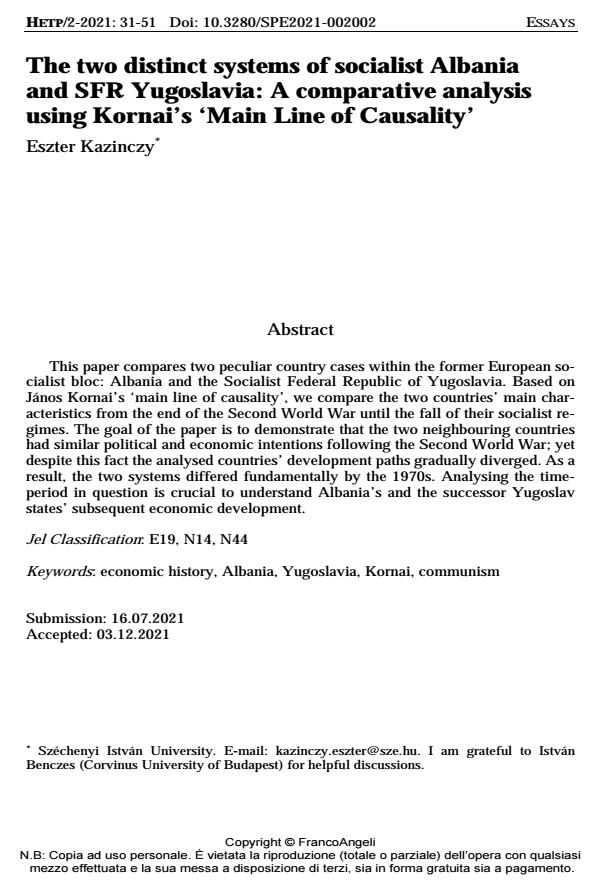The two distinct systems of socialist Albania and SFR Yugoslavia: A comparative analysis using Kornai’s ‘Main Line of Causality’
Journal title HISTORY OF ECONOMIC THOUGHT AND POLICY
Author/s Eszter Kazinczy
Publishing Year 2022 Issue 2021/2
Language English Pages 21 P. 31-51 File size 111 KB
DOI 10.3280/SPE2021-002002
DOI is like a bar code for intellectual property: to have more infomation
click here
Below, you can see the article first page
If you want to buy this article in PDF format, you can do it, following the instructions to buy download credits

FrancoAngeli is member of Publishers International Linking Association, Inc (PILA), a not-for-profit association which run the CrossRef service enabling links to and from online scholarly content.
This paper compares two peculiar country cases within the former European socialist bloc: Albania and the Socialist Federal Republic of Yugoslavia. Based on János Kornai’s ‘main line of causality’, we compare the two countries’ main char-acteristics from the end of the Second World War until the fall of their socialist re-gimes. The goal of the paper is to demonstrate that the two neighbouring countries had similar political and economic intentions following the Second World War; yet despite this fact the analysed countries’ development paths gradually diverged. As a result, the two systems differed fundamentally by the 1970s. Analysing the time-period in question is crucial to understand Albania’s and the successor Yugoslav states’ subsequent economic development.
Keywords: economic history, Albania, Yugoslavia, Kornai, communism
Jel codes: E19, N14, N44
Eszter Kazinczy, The two distinct systems of socialist Albania and SFR Yugoslavia: A comparative analysis using Kornai’s ‘Main Line of Causality’ in "HISTORY OF ECONOMIC THOUGHT AND POLICY" 2/2021, pp 31-51, DOI: 10.3280/SPE2021-002002